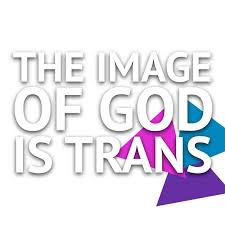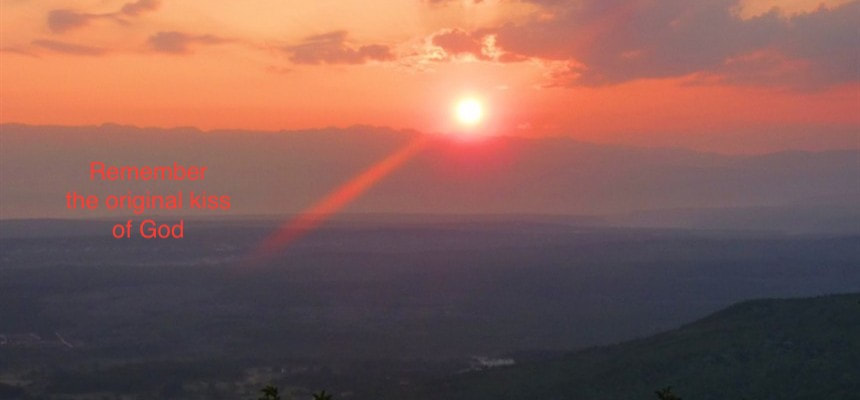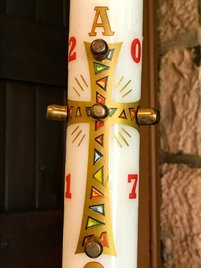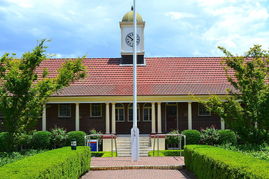|
How do we picture transfiguration? Do you like the transfiguration mandala of Jack Haas for example? It is better than many as a prompt for reflection today. For the story, symbol, and spirituality of Christian transfiguration is rich and profound. Yet it can be a puzzle and portrayed in very limited dimensions, and can then seem quite distant to some of us. Let me therefore offer four pathways into the reality and meaning of Christ’s Transfiguration: four pathways on the model of the spirituality wheel of which Penny Jones spoke to us a few months ago, and to our Ministers Retreat this week. For transfiguration, as Jack Haas suggests, is like a biblical mandala, of enriching colour and creativity for our lives: a kaleidoscope revealing divine transforming love…
0 Comments
When you step out of your door in the morning, do you feel that you are stepping into a world of wonder in which you are intimately connected? Or, are you simply stepping into mere location? Is it just dead space which you are crossing so that you can get to where you need to go? Or, do you believe you are walking into a living universe? Those are questions which the great spiritual writer John O’Donohue used to ask and they lie right at the heart of the Season of Creation we have just begun this month. For it matters vitally how we view the world and where we locate God in relation to it. So much of our politics, our business and trade activities, and our lifestyles, are affected. If we believe that matter, material existence, doesn’t really matter to God, then we will end up acting in problematic ways. Or, as John O’Donohue used to say, if we do believe that when we step out we are walking into a living universe, then our walk ‘becomes a different thing’. So let us explore some of the theological paths which can underpin more loving and sustainable ways of living together on the Earth…
 What is an 'indecent' body to you? Marcella Althaus-Reid, one of the most stimulating of modern theologians, posed this question vibrantly. Her best known book, entitled Indecent Theology, challenged us to reconsider how we see and talk about bodies - especially female, sexually and gender diverse, poor and colonised bodies - all which have been treated as ‘indecent’. This, for me, is certainly at the heart of a healthy understanding of gender identity, and, crucially, affirms the gifts which gender diverse people have for the whole body of Christ and the whole body of society and our planet. It also takes us to the heart of 1 Corinthians chapter 12, where St Paul specifically commends us to honour the ‘weaker’, ‘less honourable’, ‘less respectable’ members of the Body of Christ. For, as Paul affirms, these ‘indecent’ members are ‘indispensable’, requiring ‘greater’ honour and respect...  Human beings can’t walk on water. This is fairly easily observable. However I was once told by no less a person than a church warden, that if I could build a labyrinth for meditative walking in the religiously conservative city of Toowoomba then I could walk on water. She was trying to tell me it was impossible. But the Toowoomba City Labyrinth was built and continues as a great tool for prayer. And – I can’t walk on water! Nor, I venture to suggest could Jesus. If Jesus did walk on water, then we rid ourselves of one problem – the questioning of the historical accuracy of the Biblical account. But we create another - a Christ who only pretended to be human. Because humans can’t walk on water. We can of course protest that Jesus is the Son of God and can do anything, but the moment we do that we open up a whole other set of problems around why Jesus does not do a whole heap of other things that might be felt more useful, like ending wars or saving children’s lives. If we do not want to turn the human Jesus into a capricious divine figure masquerading as a human being, we might have to accept that he did not in fact walk on water. So, what about this story then? How are we to read it? Well some scholars resolve the problem quite neatly by declaring it to be a misplaced resurrection story. This makes a lot of sense. This is why the disciples for examples are afraid and think they are seeing a ghost. However, I do not think that is the whole answer...  As you know I rarely preach just to a text, but these two verses from 2 Corinthians are so beautiful, that I thought it wold be worth spending a little time with them, which is why I have provided them to you as a handout: “For it is the God who said, “Let light shine out of darkness”, who has shone in our hearts to give the light of the knowledge of the glory of God in the face of Jesus Christ. But we have this treasure in clay jars, so that it may be made clear that this extraordinary power belongs to God and does not come from us.” (2Corinthians 4:6-7) In the space of these two sentences, Paul encompasses the essentials of creation, incarnation and redemption and invites us to celebrate our humanity as the focal point of God’s purpose for us and all creation. So let’s take them piece by piece...  If the Feast of the Epiphany tells us anything, it is that truly holy gifts come from surprising places. Why else would the bearers of gold, frankincense and myrrh not only be Gentiles – unclean foreigners, from other nations – but also Magi to boot? Recent Christmas tradition has called them the Wise Men, or the Three Kings, but there is nothing in the text to say that they were kings, or only male, or only three of them, or even ‘wise’ in typical Jewish understanding. In fact the word Magi may indicate the word ‘magician’, as used, disapprovingly, elsewhere in the New Testament. So we have a story today where the main bearers of the revelation of Jesus Christ, and its symbols, are potentially very dodgy outsiders indeed. Of course this is highly intentional. For, from the very start, in its genealogy of Jesus, Matthew’s Gospel is keen to tell us that God’s revelation, and salvation, involves surprising people and surprising divine moves. So it was then and remains now, if our eyes, ears and hearts are open. When I begin by saying my address this morning is inspired by a funeral I attended this week, you may therefore recognise something of that same surprising movement of our surprising God… Listening to one or two people speak during last weekend’s Synod events, I was struck again by the tricky challenges of how we use both Scripture and history to illuminate our faith and lives. For both Scripture and history can be sources and mediums of Christian assurance and hope. Yet they can also be means of unhealthy myth-making and even misdirection. In secular politics, we frequently experience the same thing: when, for example, this or that dictator is ssid to be ‘just like Hitler’, or when events are said to be repeating themselves. There are sometimes varying degrees of truth in such statements. However, the reality is that noone is ever ‘just like’ someone else, never mind like Hitler. Events do not simply repeat themselves. Even Herod, in our Gospel reading, realised that: hence his perplexity about who Jesus was. Whether we use Scripture and/or historical allusions, we have to be discerning and judicious. There is much to be drawn for example from allusions, similarities, and questions, which arise from our knowledge of the early Church and the European Reformations. That is why we study them, and why, in teaching them, I actively encourage such reflection. For, in that sense, though different, like Scripture, history is not a mere record of what has been. It is an invitation to understanding ourselves, our world, and God, afresh. It is about dynamic encounter. As with some mentioned in our Gospel reading today, is inevitable that some will seek to re-run the past or think it is simply coming alive again. Yet drawing straight lines from one era to another is not only intellectually problematic but spiritually dangerous. Christians, for example, will never, ever, quite live again in the early Church or Reformation, or any other era. Our contexts and horizons will always be significantly different, not least because we are products of that history not mere participants in its re-running. All of which brings us to the challenges and wisdom of Haggai…
‘We believe Life before Death, do you?’ Let me say that again: ‘we believe in Life before Death.’ Do you believe that?
Quite a few years ago now, Christian Aid in the UK used those words as a way of highlighting their aid and development work. In doing so, they deliberately turned upside down a widespread, but deeply mistaken, view of the Christian Faith as a whole. For ‘we believe in Life after Death’ is a popular affirmation of Christian Faith, isn’t it? Of course, that is true also. The Love of God we trust in in Jesus Christ is indeed so strong that nothing can stop it, not even the powers of death. The Love of God into which Christians are baptised is truly eternal Love, eternal Life, extending through all time and space, and dimensions of existence. Sadly however, too many Christians become so caught up in the ‘Life after Death’ affirmation, that they neglect, or even look doubtfully, on the idea that Jesus, and Christian Faith, is also, and first and foremost, about ‘Life before Death.’ Too many people, in and outside our churches, understand Christianity in terms of getting to heaven when we die. What an amazing turning-upside down of the life and teaching of Jesus!...  What is your favourite Easter story I wonder? I read a lovely one the other day. A teacher had asked her young pupils to write a line or two about what they were going to do over Easter. The children started scribbling away until one little boy put his hand up. ‘How do you spell gun?’, he asked. A little bemused, the teacher replied, ‘G-U-N’. The boy started writing and then put his hand up again. ‘And how’, he said, do you spell die?’ A good deal more perturbed, the teacher replied, ‘D-I-E’, and then she added cautiously, ‘what is it you are going to do?’ ‘Oh’ said the little boy, ‘it is going to be fun… we’re gun die eggs’. Well, a number of folk among us have certainly dyed eggs for today: just one of the many wonderful symbolic traditions which have grown up over the centuries around Easter. Indeed, some of these are perhaps as curious as the little boy’s spelling and grasp of language. They are certainly diverse, rather like the variety of ways in which the Gospel writers and St Paul speak about the Resurrection. Does that matter, do you think? My sense is that that is precisely as it should be. For the Resurrection of Jesus Christ is like an explosion, the impact and implications of which can never be understood and lived out by one tidy account or explanation. Rather the meaning of Easter is only something we grow into, day by day, year by year, as we reflect upon the different ways our Bible and Tradition speak of it, and, crucially, as it comes alive for us in our own lives and times…  I am told that the former Archbishop of Sydney Peter Jensen was quite clear what entity needed to be at the heart of a flourishing diocese. ‘What is most important’, he once said, ‘is a good theological college.’ ‘And’, he added, ‘the most important thing within a good theological college is a good library.’ Perhaps on this site, we do not have to agree with everything else Peter Jensen has also said to concur positively. The role of good Christian education was, is, and always will be, vital to a healthy Church in any generation. So, as we remember Frederick Barker, the second bishop of Sydney, today, it is good to reflect on this and hold all aspects of Christian education in our prayers. For, alongside his sterling contributions to the missionary and organisational development of the Australian Church, far beyond the bounds of Sydney diocese itself, Bishop Barker is rightly to be honoured for the commitment and support he gave to the expansion of Australian Christian education in the crucial years between 1855 and 1880. For good and, in some respects, depending on your viewpoint, for ill, he was a huge formative influence in the shaping of Australian church history. So let me briefly highlight three aspects of his work and legacy… |
Authors
sermons and reflections from Penny Jones & Josephine Inkpin, a same gender married Anglican clergy couple serving with the Uniting Church in Sydney Archives
June 2024
Categories
All
|

 RSS Feed
RSS Feed